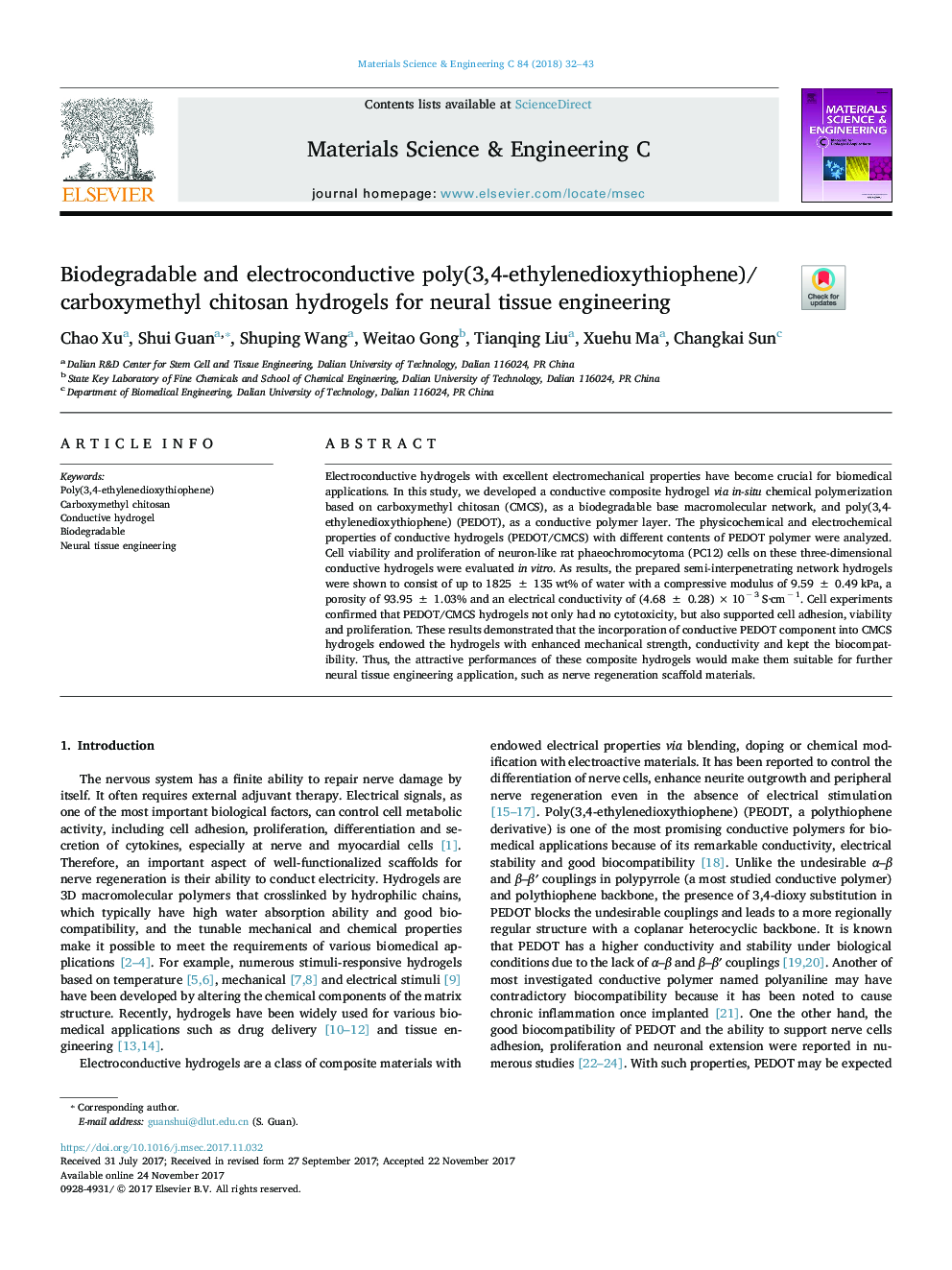| Article ID | Journal | Published Year | Pages | File Type |
|---|---|---|---|---|
| 7866591 | Materials Science and Engineering: C | 2018 | 12 Pages |
Abstract
Electroconductive hydrogels with excellent electromechanical properties have become crucial for biomedical applications. In this study, we developed a conductive composite hydrogel via in-situ chemical polymerization based on carboxymethyl chitosan (CMCS), as a biodegradable base macromolecular network, and poly(3,4-ethylenedioxythiophene) (PEDOT), as a conductive polymer layer. The physicochemical and electrochemical properties of conductive hydrogels (PEDOT/CMCS) with different contents of PEDOT polymer were analyzed. Cell viability and proliferation of neuron-like rat phaeochromocytoma (PC12) cells on these three-dimensional conductive hydrogels were evaluated in vitro. As results, the prepared semi-interpenetrating network hydrogels were shown to consist of up to 1825 ± 135 wt% of water with a compressive modulus of 9.59 ± 0.49 kPa, a porosity of 93.95 ± 1.03% and an electrical conductivity of (4.68 ± 0.28) Ã 10â 3 S·cmâ 1. Cell experiments confirmed that PEDOT/CMCS hydrogels not only had no cytotoxicity, but also supported cell adhesion, viability and proliferation. These results demonstrated that the incorporation of conductive PEDOT component into CMCS hydrogels endowed the hydrogels with enhanced mechanical strength, conductivity and kept the biocompatibility. Thus, the attractive performances of these composite hydrogels would make them suitable for further neural tissue engineering application, such as nerve regeneration scaffold materials.
Keywords
Related Topics
Physical Sciences and Engineering
Materials Science
Biomaterials
Authors
Chao Xu, Shui Guan, Shuping Wang, Weitao Gong, Tianqing Liu, Xuehu Ma, Changkai Sun,
